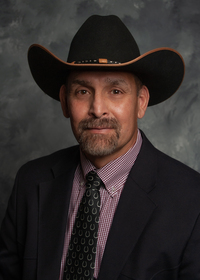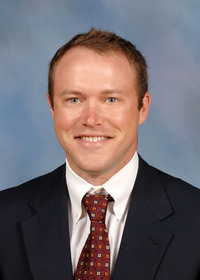Native Warm-Season Grass Restoration in Mississippi
Natural-resource managers often promote the establishment and management of native warm-season grasses for wildlife habitat. This is because a diverse mixture of native grasses and forbs generally provides better food and cover resources for wildlife species than nonnative grasses such as bermudagrass and tall fescue. Nonnative grasses were introduced for soil stabilization and livestock forage because they were easily established and highly productive, and because they could be grazed heavily. However, because nonnative grasses provide poor habitat for most wildlife, there has been greater interest in restoring native grasses for wildlife habitat.
Native warm-season grasses also provide excellent forage for livestock, making them more compatible for operations striving to produce livestock forage and good wildlife habitat simultaneously. With some careful planning and preparation, native warm-season grasses can be successfully established to meet your grassland habitat goals. Many assistance and cost-share opportunities are available to help you meet these goals. Thus, native warm-season grasses can be successfully managed for multiple objectives in Mississippi.
What Are Native Warm-Season Grasses?
Native warm-season grasses are annual and perennial grasses that were native to Mississippi before the introduction of nonnative grasses. Warm-season means these grasses primarily grow during summer months (but also during portions of spring and fall). Typically, the native forbs (e.g., broadleaf plants like wildflowers and legumes) that historically occurred with these grasses are included when someone generically refers to native warm-season grass management or restoration. Some examples of native warm-season grass species include big bluestem, little bluestem, broomsedge, indiangrass, switchgrass, and eastern gamagrass. Some native forbs include partridge pea, beggarweeds, and blackeyed susan.
Presently, native grassland systems are some of the most highly degraded ecosystems in Mississippi. When people think of grasslands, they often may think of pastures or open prairies. Indeed, native warm-season grasses were the dominant plant species that historically covered the Black Belt and Jackson Prairie regions of Mississippi. However, the understory (ground layer) communities of many fire-adapted forest systems (e.g., longleaf and loblolly pine) in Mississippi were also historically composed of grasses and forbs that were maintained by fire. Many of the same native warm-season grass species (little bluestem, indiangrass, etc.) that occurred in nonforested grasslands were also prevalent in the understory of pine-grasslands.
Most of the historic native prairies in Mississippi have been converted for agricultural uses. In modern agricultural landscapes, native warm-season grasses typically either exist in mixed stands with or have been completely outcompeted by nonnative forage grasses. Most historically longleaf pine-dominated systems have been converted to slash or loblolly pine, and most pine-grasslands in general have been negatively affected by fire suppression and high stocking densities. Pine forest communities also have been adversely affected by invasive, nonnative vegetation. Converting stands of nonnative grasses to native grasses and forbs and restoring pine-grasslands can greatly improve the quality of such stands as wildlife habitat and grassland ecosystems. Sites restored to native warm-season grasses also can be very productive hay and grazing lands with proper management. However, native warm-season grass restoration need not be limited to large acreages. Restoring only portions of agricultural fields (e.g., buffers along field edges) to native warm-season grasses can integrate grassland wildlife habitat with agricultural production.
Why Restore Native Warm-Season Grasses?
Restoration of native warm-season grasses can accomplish one or more goals for landowners. Some examples of specific goals to be achieved through native warm-season grass restoration include:
• improved wildlife habitat (e.g., bobwhite quail, grassland songbirds, butterflies);
• increased livestock forage (native warm-season grasses provide high-quality forage during summer and produce high-quality hay); and
• ecosystem restoration (e.g., prairie, oak woodland savannah, or pine woodland savannah restoration).
Restoring Native Warm-Season Grasses
Where nonnative forage grasses or other undesirable vegetation is present, the undesirable vegetation must be controlled before attempting to establish native plant communities. This is one of the most important steps in native warm-season grass restoration, and consultation with a professional experienced in native warm-season grass management before beginning any restoration efforts is recommended. Most often, control of undesirable vegetation is achieved through herbicide treatments (although, in some cases, treatments such as disking or prescribed fire may produce the desired results). When using herbicides, be sure to read and follow product labels.
Releasing Existing or Establishing New Native Plant Communities
At some sites, a native warm-season grass and forb community is already present, but it is being suppressed by competition with nonnative forage grasses. In this case, an herbicide treatment to release the native plants may satisfactorily restore the native plant community. Grasses such as broomsedge and forbs such as partridge pea may potentially be released from competing nonnative grasses such as tall fescue. Once undesirable vegetation is controlled, additional plantings may enhance the existing native plant community.
A wildlife biologist or other experienced professional can provide technical advice to determine if a particular site might be restored to a good native plant community through herbicidal treatments. When attempting to release an existing stand of native grasses from nonnative grass competition, the selectivity of the herbicide and timing of application are critical. Nonnatives can be controlled and native grasses released either by using a selective herbicide to which native warm-season grasses are tolerant (i.e., imazapic) or by applying a nonselective herbicide (i.e., glyphosate) during a time when nonnative, cool-season vegetation (e.g., tall fescue) is actively growing and native warm-season grasses are dormant.
For some sites, native plants are not sufficiently abundant, or undesirable species cannot be controlled without essentially eliminating all vegetation with intensive herbicide treatments. After initial treatments to control undesirable vegetation, wait at least a year to assess results. When undesirable species have been adequately controlled, a native plant community may be replanted; or, if suitable native vegetation is already recolonizing the site, the need for planting may be minimized or eliminated. A wildlife biologist or other experienced professional can provide technical advice for restoration of native plant communities through herbicidal treatments.
Controlling Nonnative Grasses
In general, herbicides are most effective when applied to actively growing plants in a manner that achieves maximum contact of the herbicide with foliage and/or soil surface (depending on whether the herbicide is foliar or soil-active). For any of the following herbicide treatment options, one of the following management practices (if practical) applied 2–4 weeks before herbicide treatment will usually increase herbicide effectiveness:
• prescribed burn during fall to early spring before herbicide application
• grazing
• haying and raking
• mowing
These treatments (except mowing) reduce dead plant material and allow for new plant growth, which improves the foliar contact surface for herbicides. Note that cogongrass burns at extremely high temperatures, so burning cogongrass in woodland stands may not be advisable because trees could be damaged. Use extreme care if cogongrass must be mowed; avoid mowing when seed has set, and clean off equipment to prevent spreading this noxious grass. After initial herbicide treatments of nonnative, invasive grasses, follow-up treatments (e.g., spot spraying) may be necessary to effectively remove residual plants. Periodic monitoring of treated sites is essential to determine whether undesirable grasses are still present; if still present, they should be further treated with herbicides to reduce future spread.
Tall Fescue (Schedonorus phoenix)
Actively growing tall fescue can be controlled with fall and spring treatments of glyphosate (e.g., Roundup) and imazapic (e.g., Plateau) at labeled rates. Glyphosate treatments alone may be enough to control tall fescue, but adding imazapic will increase control of tall fescue and other weedy species that may germinate from seed. These treatments should be adequate to release existing native warm-season grasses or to prepare a site for planting native warm-season grasses if tall fescue is the only grass problem present. However, some apparently tall fescue-dominated sites may have a bermudagrass component that is not easily recognizable underneath the tall fescue canopy. If there is any presence of nonnative, warm-season grasses such as johnsongrass, bahiagrass, or bermudagrass, it is best to treat the site as recommended below for these species after the tall fescue has been controlled.
Johnsongrass (Sorghum halepense)
Johnsongrass may be controlled with sulfosulfuron (e.g., Outrider) after full green-up. For best results, apply in spring when whorls of leaves develop at 16 inches along the central stalk. Imazapic (e.g., Plateau) applied before seeds germinate is effective for controlling johnsongrass establishment from seed. Glyphosate (e.g., Roundup) applied after seedhead initiation may be effective for controlling johnsongrass, but johnsongrass in some areas has developed resistance to glyphosate where those herbicides are used extensively. Although herbicides containing glyphosate can be effective for releasing native warm-season grasses growing underneath johnsongrass, be aware that there is always a risk of killing or injuring established native warm-season grasses if herbicides containing glyphosate are applied when native warm-season grasses are growing. Sulfosulfuron applied at appropriate label rates will not harm native warm-season grasses, so they can be applied over developing native warm-season grass seedlings. The previous treatments likely will be adequate if johnsongrass is the only grass problem present. However, if there is any presence of bermudagrass or bahiagrass, it is probably best to treat the site as recommended below.
Bahiagrass (Paspalum notatum)
Except for sites with established longleaf pine, bahiagrass can be controlled with a labeled rate of metsulfuron methyl (e.g., Escort) in spring after full green-up. Native warm-season grasses are mostly tolerant of metsulfuron methyl, but observe applicable replanting intervals on the product label. Metsulfuron methyl can be absorbed through the roots, so be cautious of applications around desirable trees and shrubs that may be susceptible to injury. Closely note label indications if using near nontarget trees or shrubs.
In areas that cannot be treated by metsulfuron methyl, apply labeled rates of imazapic (e.g., Plateau) mixed with glyphosate (e.g., Roundup) after bahiagrass has reached full green-up. Another treatment option is application of a labeled rate of glyphosate after bahiagrass seedhead initiation. However, multiple glyphosate-only applications will likely be required to fully control bahiagrass, and this treatment will also kill any desirable vegetation. These treatments may be adequate to release existing native warm-season grasses or to prepare a site for planting native warm-season grasses if bahiagrass is the only grass problem present. Be aware that herbicides containing glyphosate may kill native warm-season grasses if applied when they are actively growing. If there is a significant presence of bermudagrass, it is best to treat the site as recommended below; otherwise, spot-treat bermudagrass if it occurs in patches.
Bermudagrass (Cynodon dactylon)
Bermudagrass is very competitive and difficult to control with a single application of most herbicides. Because of its aggressive nature and warm-season growth pattern, it is absolutely essential to completely control bermudagrass before planting native warm-season grasses. However, sites dominated by bermudagrass can be converted by applying labeled rates of imazapyr (e.g., Arsenal, Chopper). Imazapyr applications for bermudagrass control are most effective if applied during July through September.
If imazapyr is used, the application should be made a growing season before establishing native warm-season grasses. However, it is highly recommended to wait 2 years before planting in order to determine if a second treatment is required to control bermudagrass. The residual soil activity of imazapyr will kill germinating native warm-season grasses if planted within about 6 months of imazapyr application. Closely note label precautions if using near nontarget trees or shrubs. Imazapyr will kill hardwoods and should not be applied within two times the width of the drip line of any desirable hardwood trees. In areas that cannot be treated with imazapyr, apply a labeled rate of glyphosate (e.g., Roundup) after bermudagrass seedhead initiation. Glyphosate will not control bermudagrass as effectively as imazapyr, and multiple, intensive applications of glyphosate will be required.
Cogongrass (Imperata cylindrica)
Cogongrass is a highly invasive grass that will seriously degrade wildlife habitat and native plant communities. It has no forage value to livestock or wildlife. Cogongrass spreads rapidly by wind-blown seeds and rhizomes. It is also spread by mowing, tillage, logging, and other equipment that has come into contact with seeds or roots of the plant. Because this grass can degrade property values, limit land use alternatives, and damage forest resources and wildlife habitat, landowners should learn to recognize it and take immediate actions to control it. Cogongrass is still sold by some nurseries under the name Japanese blood grass. Do not use this grass for ornamental plantings.
Treat large cogongrass infestations with labeled rates of imazapyr (e.g., Arsenal) during late summer or early fall. Although imazapyr will kill desirable hardwood trees and shrubs, it may be worth sacrificing desirable plants in order to control the spread of cogongrass. Glyphosate (e.g., Roundup) may effectively control smaller patches of cogongrass that have not yet become well-established. Glyphosate can also be used to suppress seed production in early spring before imazapyr treatments are applied later in summer. The sooner this invasive pest is treated, the more effective control efforts will be. After initial herbicide treatments, treated cogongrass stands should be carefully monitored, as further herbicide treatments will likely be necessary for effective control. If you suspect you have cogongrass on your property, contact a natural-resources professional to verify this and assist you with developing a cogongrass eradication plan. Fact sheet 1999-01 is available from the Mississippi Department of Agriculture and Commerce to help landowners identify cogongrass (available online at www.mdac.ms.gov). For more information about cogongrass, contact—
Mississippi Department of Agriculture and Commerce
Bureau of Plant Industry, Plant Pest Programs
Mississippi State, MS 39762-5207
(662) 325-3390
www.mdac.ms.gov
Controlling Woody Brush
Due to lack of management, dense infestations of woody brush such as elm, sweetgum, eastern red cedar, and green ash degrade the value of native grassland communities. Hardwood brush shades the ground and inhibits growth of desirable grasses and forbs in grass fields and upland pine forests. Appropriate herbicidal, mechanical, or prescribed-fire treatments are required to control woody brush, and, in some cases, a native grassland community can be effectively released from dense brush cover. Treatment prescriptions will depend on the types of brush present. Consult a wildlife biologist or other experienced professional to develop a plan to control woody brush and restore native grassland communities.
Although large amounts of woody brush in native grasslands are undesirable, creating and protecting some scattered patches of shrubby cover is desirable. Scattered thickets of native shrubs like wild plums, dogwoods, winged sumac, and blackberry provide good escape and loafing cover for a number of grassland birds. Maintaining about 5–15 percent of grasslands in shrubby cover will provide hiding and resting places for wildlife. Protect some existing shrub thickets from fire and herbicide treatments or plant suitable shrubs to enhance protective cover in native grass stands.
Species Selection and Planting
Native grass planting rates are expressed in terms of pounds of pure live seed (PLS) per acre. The percentage PLS reflects the amount of viable seed along with stems and other inert matter mixed in with the seed. So usually you will just need to know how many acres and at what rate (PLS) you are going to plant when purchasing seed. For example, to achieve 3 pounds PLS per acre, you may actually have to plant 4 pounds of bulk seed product. Seed vendors will usually mix several grass species for you based on percentages of grasses you want to comprise a specific PLS planting rate. Try to select cultivars or varieties of native warm-season grasses that originated close to your region, if available, as these varieties may be better adapted to your climate (see Table 1 for some suggested varieties). A seed vendor representative or other experienced professional can help you choose among available, suitable varieties.
Native warm-season grasses should be planted from mid-April to early June. (They also can be planted December through February during the dormant season.) To reiterate, competition control is essential before planting native warm-season grasses. If substantial competing vegetation remains after initial site preparations, an application of imazapic (e.g., Plateau) plus glyphosate (e.g., Roundup) or glyphosate alone may be applied just before or right after planting native warm-season grasses to help control competing weeds. Imazapic applied at appropriate rates before planting generally has few negative effects on native warm-season grasses. However, closely follow label recommendations if attempting to establish switchgrass, eastern gamagrass, or sideoats grama, as higher label rates of imazapic can have adverse effects on these species.
The fluffy seeds of big bluestem, little bluestem, indiangrass, and purple top are best planted with a native warm-season grass seed drill specially designed to handle these seeds. It is important not to plant these seeds too deeply (no deeper than one-fourth to one-half of an inch; shallower is better). When planting these seeds with a native warm-season grass seed drill, it is acceptable if some of the seed is visible on the surface. Many of these drills are capable of planting seeds via no-till planting. However, if you must plow the site before planting (e.g., there is too much litter for no-till planting), use a roller or cultipacker to firm and smooth the seedbed before planting.
A firm seedbed is essential because you do not want the seeds to be buried too deeply in a loose seedbed (this is especially important if planting with drills, which may weigh over a ton). If using a native warm-season grass drill, it is not necessary to pack the seed after planting if the drill is equipped with packing wheels. If a drill is unavailable, a less effective method of planting is broadcast seeding. Prepare a firm seedbed as previously described; broadcast seed with a carrier such as cracked corn or 0-13-13 fertilizer and pack lightly with a roller.
Eastern gamagrass is best planted with a corn planter, whereas switchgrass, sand lovegrass, and sideoats grama can be planted with a drill or broadcast seeder (a carrier is not necessary). Eastern gamagrass should be planted about 1 inch deep, whereas switchgrass, sand lovegrass, and sideoats grama should be planted no deeper than one-fourth of an inch. Follow the instructions above if planting into a prepared seedbed is necessary.
You must calibrate planting equipment to distribute the right amount of bulk seed in order to achieve the desired PLS rate. Refer to equipment documentation or consult an experienced professional for calibration instructions. The ratio of PLS to bulk seed should be printed on a label accompanying the seed when it is purchased, or the label should at least provide purity (PP) and total germination (GP) percentages. Multiply PP by GP to find the percent PLS in 1 bulk pound of seed, then divide 1 by the percent PLS to figure how many bulk pounds of seed are equal to 1 pound PLS.
After planting, be patient. Do not expect a dense stand of grasses by the end of the first growing season (although it is possible under ideal conditions). Native warm-season grass seedlings spend most of the first growing season developing a root system and may not exhibit much aboveground vegetative growth. Often, a perfectly good stand of native warm-season grasses is developing, although it may appear that the planting was unsuccessful. Native warm-season grasses planted at forage rates might develop quickly and almost completely cover a site during the first year given good growing conditions, but stands planted at lower rates for wildlife will likely contain significant bare-ground areas. However, bare ground is good for wildlife habitat, and, by the second growing season, these stands will likely be excellent cover.
Wildlife Habitat and Ecosystem Restoration
Generally, the total amount of all grasses planted should be in the range of 3–6 pounds PLS per acre for wildlife habitat. More sparse stands of grass are desirable for wildlife because dense grass growth shades out desirable forbs that produce wildlife food, and dense grass limits access for species that travel and forage along the ground. Indiangrass can become especially dense and outcompete other grasses if planted too heavily. Thus, indiangrass should comprise no more than 10 percent of native warm-season grass seed mixtures planted specifically for wildlife.
A mixture of grass species is best for wildlife because the structure and composition of mixed stands creates more diverse, usable habitats than a single species stand. See Table 2 for some suggested grass mixtures. See Table 3 for some suggested forb species.
Forb seeds can be mixed with native grass seeds for planting (drill or broadcast); alternatively, many native grass drills have separate forb boxes, but these are often hard to accurately calibrate for mixtures of large and small seeds. An alternative to mixing grass and forb seed is planting forbs in separate strips or plots without grass to reduce competition. This also allows the use of grass-selective herbicides for weed control in forb plantings if necessary. Forbs increase habitat diversity and provide wildlife foods in the form of seeds, nectar, and green forage. A diversity of forbs also attracts numerous insects that are important foods for other wildlife or attractive species for wildlife viewing (e.g., butterflies). Establishing or protecting scattered patches of native shrubs (e.g., wild plum, blackberry, and dogwood) and trees (e.g., oak and pine) in open landscapes (e.g., pastures) restored to native grasses will also enhance habitat value for wildlife by adding more diverse cover and food resources.
Livestock Forage
Native warm-season grasses provide excellent warm-season forage once established. Average daily weight gains for cattle grazing native warm-season grasses can be equal to or greater than gains reported for cattle grazing bermudagrass or bahiagrass. Native warm-season grasses work best as one component of a rotational grazing system that includes both cool-season and warm-season paddocks. Generally, 67–75 percent of the forage base should be cool-season forage, whereas 25–33 percent should be warm-season forage. Cool- and warm-season grasses should be planted in separate paddocks and not in mixed stands.
Eastern gamagrass, switchgrass, big bluestem, and indiangrass are good native warm-season grass species for forage production. Many cultivars of native grass species have been developed specifically for forage production. For livestock forage, plant native warm-season grasses (singularly or in combination) at a total rate of 8 to 12 pounds PLS per acre. Mixed-species stands of these grasses (or different single-species paddocks) will likely be advantageous because species mature at different times (possibly increasing summer forage availability), and some species may retain better forage quality during dry weather periods. Switchgrass and eastern gamagrass can be established and used more effectively when planted as single-species stands. A good combination of native warm-season grass species for both livestock forage and wildlife habitat is 3 pounds PLS per acre big bluestem, 3 pounds PLS per acre indiangrass, and 2 pounds PLS per acre little bluestem. Big bluestem and indiangrass flower later than most other native warm-season grasses, so these two species may be good choices if the objective is both hay and wildlife. Waiting until July to cut these grasses for hay allows grassland birds to have good nesting cover through the peak of the nesting season. However, grasses like switchgrass and eastern gamagrass will be past their best quality by July. Producers should weigh their objectives accordingly when trying to manage native warm-season grasses for both forage and wildlife habitat.
Maintenance and Use of Native Warm-Season Grass Stands
Once established, native grassland communities must be maintained through periodic disturbance such as disking, prescribed fire, and grazing. To manage for grassland wildlife and ecosystem restoration, periodic disturbance is essential to maintain grassland communities by controlling invading brush and trees (scattered shrubs and trees can be beneficial in grassland communities), minimizing litter accumulation, recycling nutrients, and stimulating new herbaceous plant growth. Disking should not be used to manage sensitive areas such as remnant native prairie or wiregrass communities because it may destroy rare or sensitive plants in these systems. Prescribed fire is a cost-effective tool for managing wildlife habitat and native prairie, controlling woody brush, and improving forage quality. However, prescribed burning should always be supervised by a certified prescribed burn manager, who will develop a written burn plan and obtain appropriate permits before burning. Check with the Mississippi Forestry Commission for more information about prescribed burning regulations.
Use of nitrogen (N) fertilizer during the first year of establishment is not recommended, although moderate amounts of phosphorus (P) and potassium (K) fertilizer may be beneficial during the first year. For forage production, N-P-K may be applied as needed during subsequent years to enhance production. However, native warm-season grasses do not require as much supplemental fertilization as nonnative forage grasses. In most cases, native warm-season grasses will probably not be available for substantial grazing or haying during the first growing season after planting. It is important not to graze native warm-season grasses shorter than a height of 8 inches; a rotational grazing system in which several native warm-season grass paddocks are available is the most efficient way to use native warm-season grasses for livestock forage.
The best-quality hay is produced from native warm-season grasses by harvesting when seed heads first begin to show. A professional experienced in native warm-season grass management can provide prescriptions for maintenance of native warm-season grass stands tailored specifically to your objectives.
Technical Assistance
This guide is primarily an introduction to native warm-season grass establishment and management. An excellent, more detailed reference is Native Warm-Season Grasses: Identification, Establishment, and Management for Wildlife and Forage Production in the Midsouth (Harper et al., 2007; https://extension.tennessee. edu/ publications. For professional assistance with native warm-season grass establishment and management, the following agencies are available to provide technical and programmatic assistance:
Delta Wildlife Inc.
http://www.deltawildlife.org/
(662) 686-3370
Mississippi Department of Wildlife, Fisheries, and Parks
http://www.mdwfp.com/
(601) 432-2199
Mississippi State University
College of Forest Resources
http://www.cfr.msstate.edu/
(662) 325-3830
Mississippi State University Extension Service
http://extension.msstate.edu
Contact your county Extension office (http://extension.msstate.edu/county-offices)
USDA-Natural Resources Conservation Service (NRCS)
http://www.ms.nrcs.usda.gov
(601) 965-5205
Wildlife Mississippi
http://www.wildlifemiss.org
(662) 686-3375
Seed Sources
It is recommended that you first contact an experienced professional from one of the agencies listed above to facilitate selection of grasses and forbs that are appropriate for your property. Following are some seed companies that can help you with selecting and purchasing native warm-season grass and/or forb seeds. This list is not exhaustive, and no endorsement is implied.
Specializing in Native Grasses and Forbs
Bamert Seed Company
http://www.bamertseed.com/
(800) 262-9892
1897 CR 1018
Muleshoe, TX 79347
Ernst Conservation Seeds
http://www.ernstseed.com
(800) 873-3321
8884 Mercer Pike
Meadville, PA 16335
Roundstone Native Seed
http://www.roundstoneseed.com
(270) 531-2353
9764 Raider Hollow Road
Upton, KY 42784
Sharp Brothers Seed Company
http://www.sharpseed.com
(620) 398-2231
1005 S Sycamore
Healy, KS 67850
Star Seed Company
http://www.gostarseed.com
(800) 782-7311
101 Industrial Avenue
Osborne, KS 67473
Turner Seed Company
http://www.turnerseed.com
(800) 722-8616
211 County Road 151
Breckenridge, TX 76424
Warner Brothers Seed Company
http://www.wbseedco.com
(800) 467-7250
P.O. Box 101
Lawton, OK 73502
Financial Assistance
Conservation programs may be available to provide cost-shares or incentives for native warm-season grass establishment. Because conservation programs can often change, landowners are encouraged to seek technical assistance to find out what kinds of programs might be available to meet management objectives.
Contact the Natural Resources Conservation Service (NRCS) at your USDA Service Center, or a wildlife biologist with one of the agencies listed in the Technical Assistance section, about availability of potential assistance programs.
Additional References
Harper, C. A., G. E. Bates, M. J. Gudlin, and M. P. Hansbrough. 2004. A landowner’s guide to native warm-season grasses in the Midsouth. University of Tennessee Extension PB1746. Available online at https://extension.tennessee.edu/publications (August 2018).
Keyser, P., G. Bates, J. Waller, C. Harper, F. Allen, E. D. Holcomb, and D. McIntosh. 2015. Producing hay from native warm-season grasses in the Midsouth. University of Tennessee Extension. SP731-D. Available online at https://extension.tennessee.edu/ publications (August 2018).
Rushing, J. B. and R. Lemus. 2014. Native warm-season grasses as forage in Mississippi: Establishment. Mississippi State University Extension Service P2830. Available online at http://extension.msstate.edu/publications/publications/native-warm-season-grasses-forage-mississippi-establishment (August 2018).
Rushing, J. B. and R. Lemus. 2014. Native warm-season grasses as a forage in Mississippi: Grazing management. Mississippi State University Extension Service P2843. Available online at http://extension.msstate.edu/publications/publications/native-warm-season-grasses-forage-mississippi-grazing-management (August 2018).
USDA-Natural Resources Conservation Service, PLANTS database. Available online at http://plants.usda.gov/index.html (August 2018).
Summary
Native warm-season grasses are a vital part of natural grassland and woodland ecosystems in Mississippi. By managing competition from undesirable vegetation and following proper planting procedures, native warm-season grass stands can be successfully established. With proper management, native warm-season grasses are compatible with both wildlife habitat and livestock forage goals. Consult a natural-resources professional to develop a plan for native warm-season grass management that will best fit your objectives.
Recommended Plantings for Restoring Native Plant Communities
Following are brief lists of native grasses and forbs that are generally available for purchase. In some instances, introduced forb species may be acceptable (e.g., kobe lespedeza). Always consult a natural-resources professional before planting introduced species. Consult a natural-resources professional or seed company representative to decide which species and cultivars or varieties of available native warm-season grass seed and forbs will best fit your objectives.
|
Common Name |
Scientific Name |
Varieties or Cultivars* |
Planting Depth |
Planting Method |
|---|---|---|---|---|
|
Big bluestem |
Andropogon gerardii |
Kaw, Earl, Suther, Rountree |
0.25 inch |
Drill; broadcast |
|
Little bluestem |
Schizachyrium scoparium |
Aldous, Cimmaron, Camper, Blaze |
0.25 inch |
Drill; broadcast |
|
Broomsedge |
Andropogon virginicus |
Limited seed availability; readily colonizes most sites in Mississippi naturally |
0.25 inch |
Drill; broadcast |
|
Indiangrass |
Sorgastrum nutans |
Lometa, Osage, Americus, Cheyenne, Rumsey |
0.25 inch |
Drill; broadcast |
|
Switchgrass |
Panicum virgatum |
Alamo, Kanlow, Blackwell, Expresso |
0.25-0.5 inch |
Drill; broadcast |
|
Eastern gamagrass |
Tripsacum dactyloides |
Highlander, Jackson, Bumpers, Pete |
1 inch |
Grain planter |
|
Sideoats grama |
Bouteloua curtipendula |
Haskell, Trailway, Butte |
0.25-0.5 inch |
Drill; broadcast |
|
Sand lovegrass |
Sporobolus spp. |
Several species adapted to particular sites |
0.25 inch |
Drill; broadcast |
|
Purple top |
Tridens flavus |
N/A |
0.25 inch |
Drill; broadcast |
* When purchasing seed, inquire whether cultivars that originated from nearby areas are available that may be better adapted to Mississippi.
Bold planting methods indicate planting methods that yield the best results.
|
|
Grass Mixtures (pounds PLS/acre) |
|---|---|
|
Tallgrass prairie or Delta mixture |
Little bluestem (2 lb), big bluestem (1 lb), indiangrass (0.5 lb), switchgrass (0.5 lb) |
|
Shortgrass prairie or Delta mixture |
Little bluestem (2.5 lb), sideoats grama (1 lb), big bluestem (0.25 lb), indiangrass (0.25 lb) |
|
Average soils mixture (e.g., red clay soils) |
Little bluestem (2 lb), purple top (1 lb), indiangrass (0.5 lb), switchgrass (0.5 lb) |
|
Sandy/degraded soil mixture |
Little bluestem (2 lb), dropseed (0.5 lb), purple top (1 lb), switchgrass (0.5 lb) |
|
Grazing mixture, heavy soils |
Big bluestem (3.5 lb), indiangrass (3.5 lb), switchgrass (2 lb), little bluestem (1 lb), or eastern gamagrass or switchgrass in single-species stands |
|
Grazing mixture, average soils |
Little bluestem (2 lb), indiangrass (4 lb), big bluestem (2 lb), switchgrass (2 lb), or switchgrass in single-species stands |
Rates may be adjusted based on desired seeding rate. If approximate bulk seed volume output rates can be obtained for the drill being used, this will help determine amount of seed to purchase. Remember that pure live seed will have to be estimated from bulk seed volume, and pure live seed rates will have to be approximated as close to the desired rate as possible based on bulk seed output by specific drill settings.
Calculating Bulk Pounds of Seed for Planting
Multiply pure seed percentage by total germination percentage. If pure seed is 70 percent and total germination is 85 percent, then 0.70 multiplied by 0.85 equals 0.595 or 59.5 percent pure live seed in 1 bulk pound of seed. Divide 1 by the percentage of pure live seed in 1 bulk pound to determine bulk pounds of seed that equal 1 pound of pure live seed.
In this example, 1 divided by 0.595 equals 1.68 bulk pounds. Thus, there is 1 pound of pure live seed in 1.68 bulk pounds. To plant at a rate of 4 pound pure live seed per acre, plant approximately 7 bulk pound of seed per acre (1.68 multiplied by 4). The actual rate that can be planted will depend on equipment used. For example, the lowest output setting on a native grass drill may be 5 bulk pounds, while the next output setting may be 8 bulk pounds. In this example, 5 bulk pounds would equal approximately 3 pounds of pure live seed (5 multiplied by 0.595), and 8 bulk pounds would equal approximately 5 pounds of pure live seed (8 multiplied by 0.595).
|
Common Name |
Scientific Name |
Form (Varieties) |
Soil Adaptation* |
|---|---|---|---|
|
Bergamot |
Monarda fistulosa |
Mint, perennial |
L, M, H |
|
Slender mountain mint |
Pycnanthemum tenuifolium |
Mint, perennial |
M, H |
|
False sunflower |
Heliopsis helianthoides |
Aster, perennial |
M, H |
|
Blazing star |
Liatris spp. |
Aster, perennial |
M, H |
|
Purple coneflower |
Echinacea purpurea |
Aster, perennial |
M, H |
|
Gray-headed coneflower |
Ratibida pinnata |
Aster, perennial |
M, H |
|
Coreopsis |
Coreopsis spp. |
Aster, annual–perennial |
M, H |
|
Compass plant |
Silphium laciniatum and other Silphium spp. |
Aster, perennial |
H |
|
Maximilian sunflower ** |
Helianthus maximiliani |
Aster, perennial |
M, H |
|
Common sunflower |
Helianthus annuus |
Aster, annual |
M, H |
|
Narrow leaved sunflower |
Helianthus angustifolius |
Aster, perennial |
L, M |
|
Milkweed |
Asclepias spp. |
Aster, perennial |
M, H |
|
Blackeyed Susan |
Rudbekia hirta |
Aster, annual–perennial |
L, M, H |
|
Tickseed |
Bidens spp. |
Aster, annual–perennial |
M, H |
|
Florida beggarweed |
Desmodium tortuosum |
Legume, annual–perennial |
L, M, H |
|
Smooth ticktrefoil |
Desmodium laevigatum |
Legume, perennial |
L, M, H |
|
Stiff ticktrefoil |
Desmodium obtusum |
Legume, perennial |
L, M, H |
|
Partridge pea *** |
Chamaecrista fasciculata |
Legume, annual (Lark, Comanche) |
L, M, H |
|
Roundhead lespedeza |
Lespedeza capitata |
Legume, perennial |
L, M, H |
|
Slender lespedeza |
Lespedeza virginica |
Legume, perennial |
L, M, H |
|
White prairie clover |
Dalea candida |
Legume, perennial |
H |
|
Purple prairie clover |
Dalea purpurea |
Legume, perennial |
H |
|
White indigo |
Baptisia alba |
Legume, perennial |
L, M |
* L = light soils (drier, sandy, and silty soils; may not be suitable for extremely droughty soils);
M = medium soils (well-drained loam and clay soils);
H = heavy soils (moderately drained, heavier clay soils such as prairie or Delta soils)
** Not native to Mississippi, but native to western United States; not known to be invasive in Mississippi.
*** Some varieties of partridge pea grow very tall and can become quite dense. It can inhibit prescribed fire and exclude other desirable plants if it becomes dense. It is recommended to plant at rates of no more than a few ounces per acre unless dense stands are desired.
This project was funded in part by the Mississippi Department of Wildlife, Fisheries, and Parks, and the MSU Natural Resource Enterprises program.
The information given here is for educational purposes only. References to commercial products, trade names, or suppliers are made with the understanding that no endorsement is implied and that no discrimination against other products or suppliers is intended.
Publication 2435 (POD-03-19)
By Rick Hamrick, Wildlife Biologist, Mississippi Department of Wildlife, Fisheries, and Parks; L. Wes Burger, Professor, Forest and Wildlife Research Center; Jeanne Jones, former Associate Professor, Forest and Wildlife Research Center; and Bronson Strickland, Extension Professor, Wildlife, Fisheries, and Aquaculture.
The Mississippi State University Extension Service is working to ensure all web content is accessible to all users. If you need assistance accessing any of our content, please email the webteam or call 662-325-2262.









